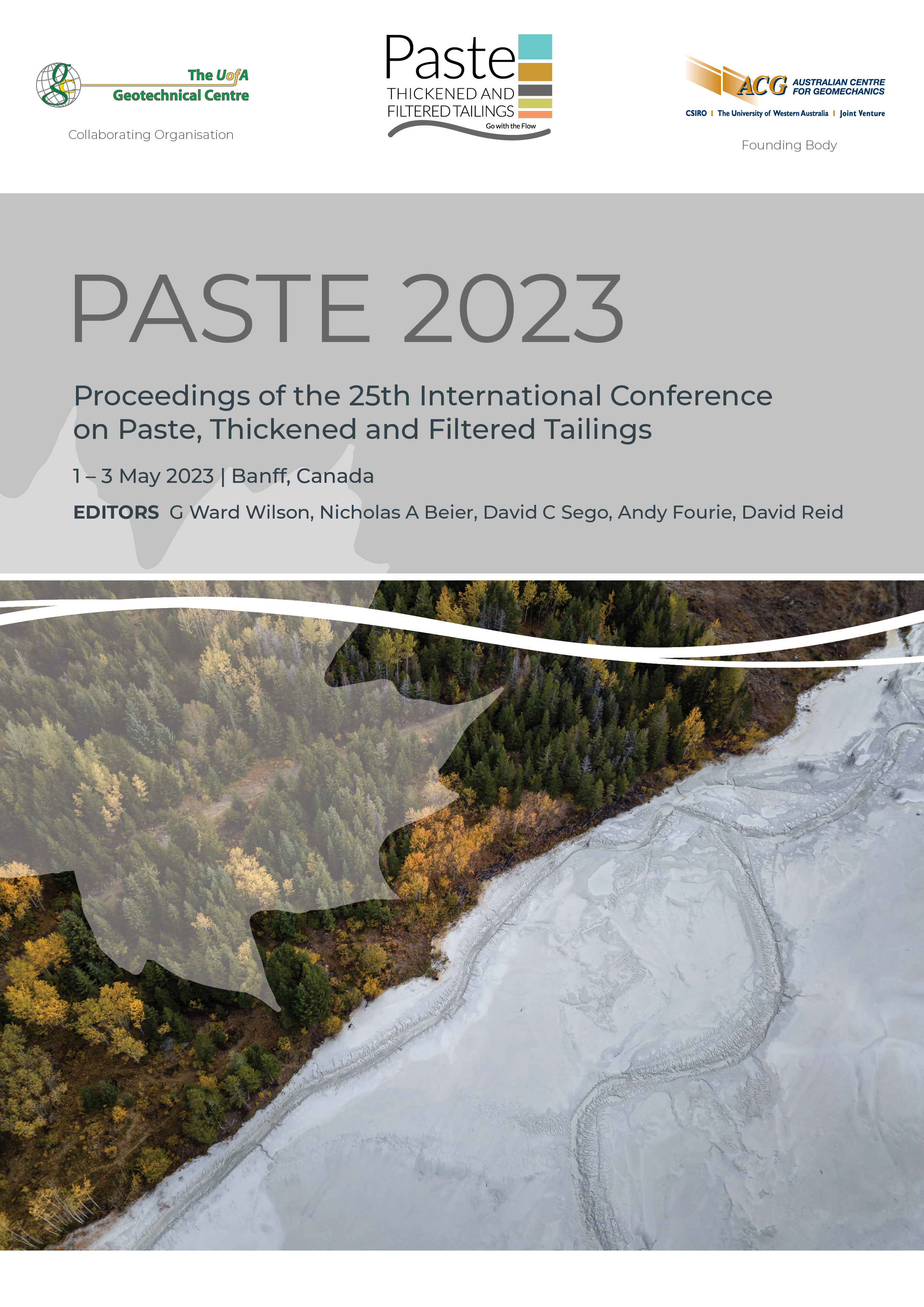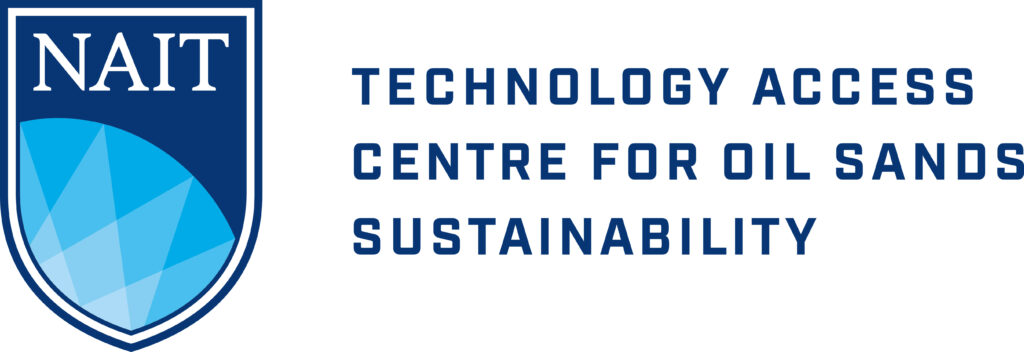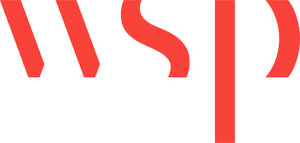Evaluating the dry stacking performance of commingled waste rock and filtered tailings

|
Authors: Burden, R; Wilson, GW |
DOI https://doi.org/10.36487/ACG_repo/2355_53
Cite As:
Burden, R & Wilson, GW 2023, 'Evaluating the dry stacking performance of commingled waste rock and filtered tailings', in GW Wilson, NA Beier, DC Sego, AB Fourie & D Reid (eds), Paste 2023: Proceedings of the 25th International Conference on Paste, Thickened and Filtered Tailings, Australian Centre for Geomechanics, Perth, pp. 686-692, https://doi.org/10.36487/ACG_repo/2355_53
Abstract:
Dry stacking of filtered tailings is becoming an increasingly widespread approach to tailings management. Dry stacking can potentially offer some significant advantages over traditional tailings deposition, such as lower geotechnical risk, greater water return, much lower overall waste volume, and ease of reclamation and closure, thereby enabling a higher level of post-closure land use. However, filtration and compaction costs, and the operational complexity of dry stacking, can make it challenging. It has been shown that commingling of filtered tailings and waste rock can improve the geotechnical performance of the stack, and it has the potential to allow stacks to be constructed more rapidly in higher lifts, making dry stacking more economical for large operations. This paper presents an overview of recent research into the geotechnical properties of filtered tailings and waste rock blends. Results from a series of shear strength and consolidation tests are also presented. It is shown that the addition of waste rock to filtered tailings stacks significantly increases the shear strength and reduces the pore pressure response during placement. This could potentially allow higher and faster lifts to be stacked safely.
Keywords: filtered tailings, commingling, dry stacking
References:
Burden, R, Williams, DJ, Wilson, GW & Jacobs, M 2018, ‘The shear strength of filtered tailings and waste rock blends’, Proceedings of the 22nd International Conference on Tailings and Mine Waste, Colorado State University, Fort Collins, pp. 347–355.
Burden, R 2021, Using Co-Disposal Techniques to Achieve Stable “Dry-Stacked” Tailings: Geotechnical Properties of Blended Waste Rock and Tailings in Oil Sands and Metal Mining, PhD thesis, University of Alberta, Edmonton,
Bussiere, B 2007, ‘Colloquium 2004: hydrogeotechnical properties of hard rock tailings from metal mines and emerging geoenvironmental disposal approaches’, Canadian Geotechnical Journal, vol. 44, no. 9, pp. 1019–1052.
Davies, MP & Rice, S 2001, ‘An alternative to conventional tailings management–“dry stack” filtered tailings’, Proceeding of Tailings and Mine Waste ’01, pp. 411–420.
Habte, K & Bocking, K 2017, ‘Co-disposal practice in mine waste management’, in GW Wilson, DC Sego & NA Beier (eds), Proceedings of the Twenty-first International Conference on Tailings and Mine Waste, University of Alberta, Edmonton, pp. 273–287.
Jewell, RJ & Fourie, AB 2006, Paste and Thickened Tailings – A Guide, Australian Centre for Geomechanics, Perth.
Morgenstern, N, Vick, S & Watts, B 2016, Fundão Tailings Dam Review Panel: Report on the Immediate Causes of the Failure of the Fundão Dam.
Wilson, GW, Wickland, B & Miskolczi, J 2008, ‘Design and performance of paste rock systems for improved mine waste management’, in AB Fourie (ed.), Rock Dumps 2008: Proceedings of the First International Seminar on the Management of Rock Dumps, Stockpiles and Heap Leach Pads, Australian Centre for Geomechanics, Perth, pp. 107–116,
Wickland, BE, Wilson, GW, Wijewickreme, D & Klein, B 2006, ‘Design and evaluation of mixtures of mine waste rock and tailings’, Canadian Geotechnical Journal, vol. 43, no. 9, pp. 928–945.
Wickland, B & Longo, S 2017, ‘Mine waste case examples of stacked tailings and co-disposal’, in GW Wilson, DC Sego & NA Beier (eds), Proceedings of the Twenty-first International Conference on Tailings and Mine Waste, University of Alberta, Edmonton, pp. 251–252.
© Copyright 2025, Australian Centre for Geomechanics (ACG), The University of Western Australia. All rights reserved.
View copyright/legal information
Please direct any queries or error reports to repository-acg@uwa.edu.au
View copyright/legal information
Please direct any queries or error reports to repository-acg@uwa.edu.au



